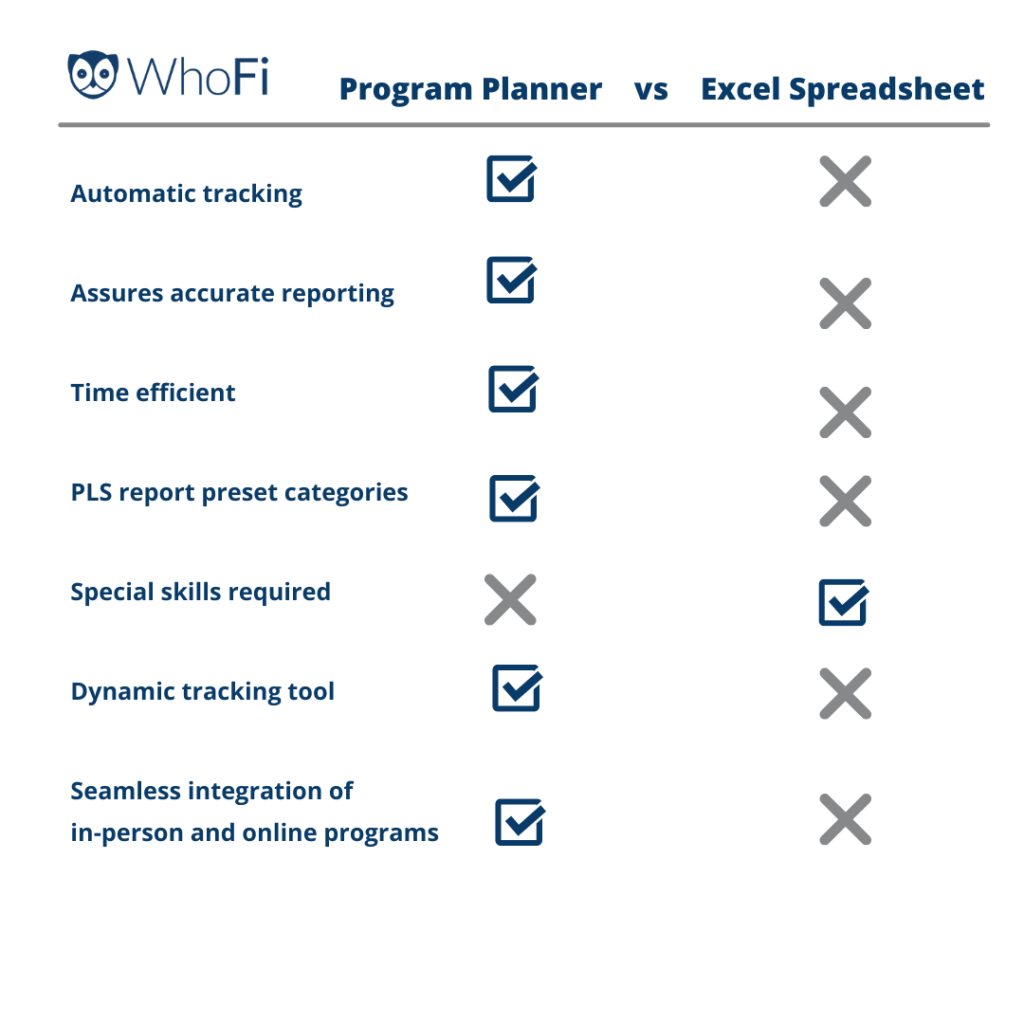Program Planning For Public Libraries In The Digital Age
As more programs move outside of the library or on a virtual platform, libraries are struggling to find ways to account for program attendance. A hodgepodge of meeting room scheduling software, excel spreadsheets and manual tabulations just isn’t meeting the needs of the modern library in the digital age.
Libraries are seeing program attendance that’s higher than it’s ever been because online platforms can make programs available to more people, since there’s no space or time restrictions like there is within a physical building. In addition, virtual programs are getting more views after the event has ended, which adds to the higher number of program attendees.
Things can quickly become complicated and arduous when trying to count attendance for library programs in the new normal. But it doesn’t have to be!
How Can Libraries Account For Both Online And In-Person Programs?
With the complexities of having both in-person and online programming comes new challenges for accounting for attendance. Library governing bodies recognize the need to account for these new ways of patron engagement, so individual libraries need to find a way to document and report all programs.
Community Calendar was developed from feedback from our library partners who expressed the need for a better way to track program attendance. So let’s take a look and compare the Community Calendar to the Excel spreadsheet tracking method.
How Is Community Calendar Different From Excel Spreadsheet Tracking Methods?
The frustrations we heard from library partners was that excel spreadsheets require a lot of time. This is time that could be spent helping patrons or more big picture library operations. It requires constant upkeep and maintenance, which provides many opportunities for errors. With spreadsheets, you have to input everything and create any charts, graphs or formulas.
Your spreadsheet skills need to be pretty good to produce the kind of data you’d get with an advanced application like Community Calendar.
Community Calendar is a dynamic tool to track multimodal programs. The program creates the data graphs and charts that provide an easy-to-read report with the click of a button. It doesn’t require a lot of time and anyone can use it, no special skills necessary.
Preset categories mirror exactly what will be required to fill out the PLS. The layout makes it easy to view specific data points of interest, whereas spreadsheets have everything in view with no way to select or sort for specific views.
The biggest benefit of Community Calendar is that it gives you back more time, assures accurate reporting, and fits exactly with what you need to fill out the PLS survey. Time and convenience are major benefits of using the Community Calendar.
Schedule a demo today and see how your library can benefit from Community Calendar.

